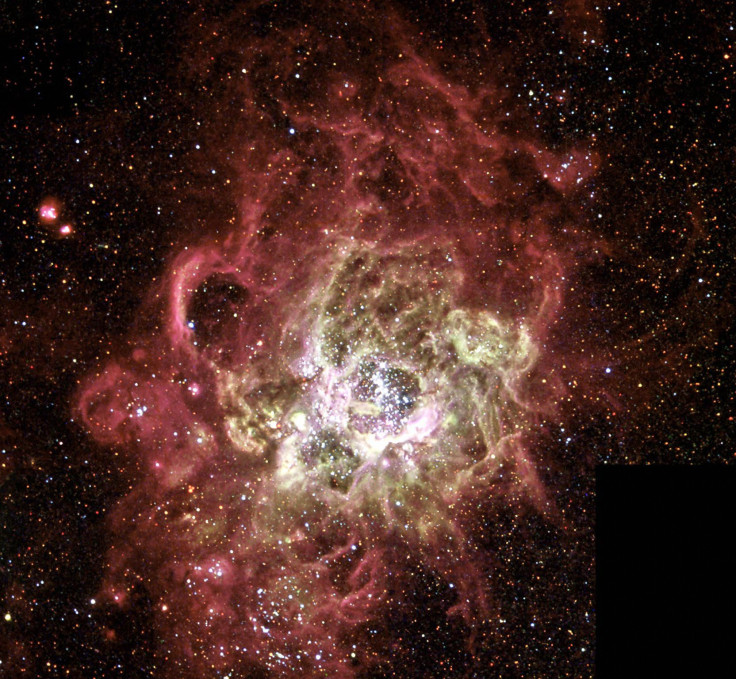NASA's Hubble Captures Images Of Cosmic 'Holiday Wreath Made Of Sparkling Lights' [PHOTO]

NASA's Hubble Space Telescope has managed to capture some of the most stunning phenomena in the cosmos, and one of the latest images it took showed what it has been dubbed a "holiday wreath."
Last week, NASA released a new image from the Hubble telescope and described it in a statement as "a holiday wreath made of sparkling lights." In the image is the star RS Puppis in the center. The star, which NASA revealed is 200 times larger than our Sun, is surrounded by what the space agency calls a "gossamer cocoon of reflective dust." It appears bright in the image because it is being lit up by the sparkling RS Puppis star.
As to how the Hubble managed to get a clear picture of the so-called "cosmic holiday wreath," the space agency explained in a statement that the telescope captured images of a "light echo."
"Hubble took a series of photos of light flashes rippling across the nebula in a phenomenon known as a 'light echo.' Even though light travels through space fast enough to span the gap between Earth and the Moon in a little over a second, the nebula is so large that reflected light can actually be photographed traversing the nebula," NASA said.
Space Telescope Science said that this particular star is one of the most luminous in the class of Cepheid variable stars. Over a six-week cycle, it brightens and dims gradually, and its average intrinsic brightness is 15,000 times greater than the Sun's luminosity.
This isn't the first time that NASA has released images of beautiful phenomena in the cosmos.
Last month, the space agency's Juno mission produced mesmerizing images of Jupiter's colorful clouds. However, what captured the attention of the internet regarding these photos is the presence of "creatures" within the clouds, such as a "squid," "dolphin" and even a "dragon's eye."
The spacecraft revealing #Jupiter’s inner and outer beauty will soon be halfway through its mission. Here’s what the future holds for @NASAJuno: https://t.co/HodmPX0Q9n pic.twitter.com/4kvC9P59Xl
— NASA JPL (@NASAJPL) December 12, 2018
The Juno mission aims to give scientists a better understanding of Jupiter's origin and evolution. Through this, scientists may also discover the secrets of the formation of the solar system. "As our primary example of a giant planet, Jupiter can also provide critical knowledge for understanding the planetary systems being discovered around other stars," NASA said.
Launched on Aug. 5, 2011, NASA's Juno spacecraft arrived in Jupiter in July 2016 and will end its orbit around the planet, and therefore its mission, in July 2021. On Dec. 21, it reached the "halfway point" of its journey.
© Copyright IBTimes 2024. All rights reserved.





















